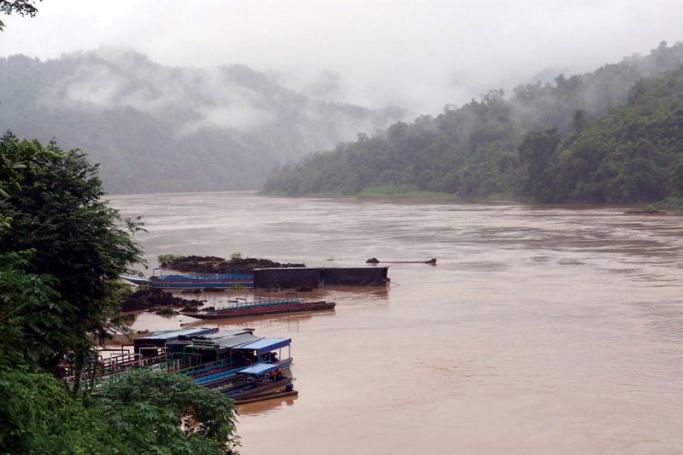An historic two-day event was held March 27-28 to honour the natural and cultural heritage of the Thanlwin or Salween River and its people.
It was said to be the first time that state government, local and national civic organizations, academics and others gathered to publicly celebrate, with art, performances, and discussion, one of the world’s last great free-running rivers, according to the Karen Environmental and Social Action Network received on March 30.
Saw Tha Phoe, one of the event organizers, said, “We are holding this event to celebrate the beauty and diversity of the Salween River and its people through art and performance. We hope that the whole country will be able to understand the great cultural and ecological value of the Salween River.”
March 27 saw an art exhibition and a talk. On March 28, the participants enjoyed a long voyage on the river.
The nearly 3,000 km-long Thanlwin River [known as Nu in China] originates in Tibet and flows through remote and forested areas of southwestern China and eastern Myanmar. It also forms the border between Myanmar and Thailand in the latter country’s Mae Hong Son province. The river passes through Kayin State’s capital of Hpa-an and reaches the Indian Ocean at the Mon State capital city Mawlamyine.
Unlike its sister rivers originating in Tibet, the heavily dammed Mekong and Yangtze, the Thanlwin is one of the longest undammed rivers left in the world. The Salween basin is home of the cultures of the Shan, Kayan, Karen, Mon and other peoples. It is also home to the world’s last great teak forest, to dry-season islands rich with crops, and to healthy fisheries upon which many people depend.
Saw Kyaw Hla, a resident of Mikayin village along the Thanlwin River, is helping to plan the event.
He said: “The Salween River is important for our livelihood, for our survival. The river provides us with food, drinking water, and irrigation water to grow our crops. The income we earn from farming along the Salween allows us to send our children to school.”
You are viewing the old site.
Please update your bookmark to https://eng.mizzima.com.
Mizzima Weekly Magazine Issue...
14 December 2023
Spring Revolution Daily News f...
13 December 2023
New UK Burma sanctions welcome...
13 December 2023
Spring Revolution Daily News f...
12 December 2023
Spring Revolution Daily News f...
11 December 2023
Spring Revolution Daily News f...
08 December 2023
Spring Revolution Daily News f...
07 December 2023
Diaspora journalists increasin...
07 December 2023
Local Shan people call for their identity to be added to signboard












